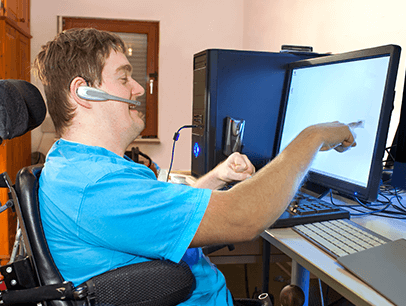
Candace is an exchange student from New Zealand taking courses at a prestigious law school in the United States. Although she’s learning a lot, her classroom experience leaves something to be desired. “Back home I run a law office with 10 attorneys, and I have no problem speaking up,” says Candace (a pseudonym). “But in class, the men compete for the professor’s attention, and I can’t get a word in edgewise.”
It’s a Toastmaster’s duty and privilege to include more voices.
Candace’s experience isn’t unusual. Research shows that in group discussions, members of dominant social groups are more likely to speak, and speak for longer periods, than members of social subgroups. Men on average speak more than women; ethnic-majority members speak more than those in the minority. We learn about social status early in life, and those lessons are powerfully reinforced by society. Toastmasters clubs aren’t immune. You may notice that power dynamics from the outside world replicate themselves within your club. Do older members or native-language speakers volunteer more frequently than others for speaking roles? Do long-standing members act as unofficial referees, interrupting and correcting newcomers when things don’t go according to plan? Is your real-world boss also the boss of your corporate club?
Although unequal speaking time isn’t necessarily a sign of bad intentions, there’s much to gain from inclusion. Aside from encouraging personal expression and social equity, groups that allow more voices to be heard benefit by having more individual experiences to draw on. This leads to better knowledge sharing and decision-making. Groups get smarter when everyone participates.
To promote inclusion within our clubs and beyond, meeting leaders need to take a more conscious approach to structuring group conversations. Instead of relying on ourselves to call on people equitably, which may be hard to do while presenting, we can create the conditions for inclusion with seven simple steps.
1 Send your agenda or discussion topics in advance.
This gives participants who are more reticent—whether because of communication apprehension or introversion—a chance to reflect on the topic and prepare their contributions in advance.
2 Verbalize expectations at the beginning of the meeting.
When participants know the rules of the road—how and when their contributions will be welcomed—they’ll feel more comfortable speaking. For instance, simple phrases like, “I’d like to hear from everybody” or “We’d like this to be inclusive” let participants know that speaking opportunities won’t be distributed according to status. Similarly, you can verbalize how participants are to seek recognition: “Please raise your hands to be called on.” Let people know whether questions will be taken throughout or whether they should hold them for a separate question-and-answer period at the end.
Groups get smarter when everyone participates.
Verbalizing expectations removes uncertainty, and is especially important for virtual meetings, because there are fewer nonverbal cues to guide conversational turn-taking. A delay in signal transmission makes it more difficult for participants to just jump in with questions or comments.
3 Do a round-robin.
In an in-person meeting, go around the room and allow everyone a chance to speak. This works especially well when people are seated in a circle or around a conference table, because it’s easy to see whose turn it is. In a virtual meeting, ask each speaker to choose the next speaker. Both techniques take the decision about whose turn it is to speak out of the hands of the discussion leader, making it a shared responsibility. Each participant is given a platform. Most people will speak when given the platform.
4 Build in five-second pauses.
Confident people are quick to raise their hands and often get called on first. But if you build in a five-second pause after posing a question or finishing part of your presentation, it allows those who need more time to reflect an opportunity to get their hands up. This technique comes from Iris Bohnet’s wonderfully practical book What Works: Gender Equality by Design.
5 Ask: “Does anyone have a different point of view?”
It’s typical for small groups to coalesce around a single dominant viewpoint and for dissenters to silence themselves—a phenomenon known as groupthink. But what if you specifically invite those with a different opinion to share their view? You’re more likely to hear opposing viewpoints if you ask, and groups reach better decisions when there’s more diversity of thought.
6 Pair and share.
If you want participants to be comfortable sharing their views in front of a larger group, allow them to first discuss in pairs or small groups. It gives them a dry-run rehearsal for their ideas and helps build confidence. In a virtual setting, this can be accomplished through breakout rooms.
7 Invite appreciation.
At the end of your meeting, ask if any participants would like to express appreciation for something someone else has said. This technique, borrowed from Stephen Brookfield’s Powerful Teaching Techniques for Adults, is a positive way to build community. It recognizes that valuable contributions can come from any direction.
The fact that Candace felt comfortable professionally managing a law office in New Zealand but not when taking law courses in a foreign country isn’t surprising. For most people, communication confidence fluctuates depending on the situation or who is in the room. These seven tips work by reducing uncertainty and providing structure, similar to the regular agendas and defined speaking roles we use in Toastmasters. These tools help us live up to our mission of providing a “mutually supportive environment.” But we can always do more.
In my home club, we have a tradition of concluding each meeting with a “Final Go-Around.” Each attendee gets an opportunity to say a few words. For those who didn’t have an assigned role, it’s a chance to do what they’ve come there to do: speak. It’s a Toastmaster’s duty and privilege to include more voices.
Jesse Scinto, DTM is a Fulbright scholar and deputy director of the strategic communication program at Columbia University in New York City. He’s also the founder/CEO of Public Sphere, a leadership communication firm, and a member of Greenspeakers Club in New York City.
Related Articles

Communication
Is Your Voice Being Counted?

Online Meetings
Creating Inclusivity in Online Meetings

Diversity and Inclusion



 Previous
Previous

 Voices of Inclusion
Voices of Inclusion
 Previous Article
Previous Article